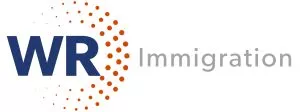Delving into the intricacies of the Final Action Chart (Chart A) and Dates for Filing Chart (Chart B), this legal article aims to provide clarity on the often-discussed topic in our "Chatting With Charlie" series.
Understanding Chart A and Chart B:
Chart A Basics:
Chart A signifies immigrant visa number availability for that month through consular processing oversees or through adjustment of status with U.S. Citizenship and Immigration Services (USCIS). If an individual's priority date is before the applicable date, they are eligible for final action on their immigrant visa case during that month.
Chart B Basics:
Chart B, indicates eligibility to assemble and submit required documentation to a consular post, if processing the immigrant visa overseas, OR to file an adjustment of status application to USCIS, if processing the immigrant visa in the U.S. Individuals with a priority date before the applicable date which is listed can submit their documentation or adjustment of status application.
USCIS Adjudication and DOS Oversight:
USCIS adjudications account for approximately 85% of all employment-based immigrant visa use1. The U.S. Department of State (DOS) oversees the administration of the annual numerical limitations on immigrant visas (or green cards if issued in the U.S. by USCIS) through the dates listed in Chart A of the Visa Bulletin.
DOS, in consultation with USCIS, establishes monthly visa number use targets and administers the Visa Bulletin. The Visa Bulletin is a monthly publication that summarizes immigrant visa number availability governing the issuance of an immigrant visa (overseas) or green card (processing in the U.S.) during a particular month.
Setting Chart B:
DOS in consultation with USCIS establishes targets to be used in the determination of the dates listed in Chart B. The goal with setting Chart B dates is to generate enough demand for visa numbers which will be available for use during the next 8 to 12 months. Doing so allows applicants to begin submitting their required documentation for overseas case processing or to file their adjustment of status applications if processing their case in the U.S. and for those applicants to have their case finalized once their priority date is available in Chart A. In other words, the dates listed in Chart B of the October 2023 Visa Bulletin are projected to match (or exceed) the final action dates which will be listed in Chart A of the September 2024 Visa Bulletin, aligning with the fiscal year end.
If it appears that there will be insufficient applicant demand to meet the fiscal year's applicable annual limit, DOS will advance the filing date in Chart B to allow additional applicants to be processed, to maximize immigrant visa number use under the applicable annual limit.
For example, in the December 2023 Visa Bulletin, Chart B for EB-1 India was listed as being July 1, 2019, and in January 2024, Chart B for EB-1 India advanced to January 1, 2021, because it was necessary to generate additional demand for applicants with priority dates earlier than January 1, 2021. That advancement of the date was done in an effort to maximize EB-1 India number use under that annual limit. As a result of that Chart B advancement, additional EB-1 India applicants are able to begin submitting documentation if processing overseas, or to submit their adjustment of status applications if processing their case in the U.S.
Application Filing Date Projection:
The application filing date is set to allow each preference category and per-country limit to be reached by the end of each fiscal year, by allowing applicants to file months before their case will become eligible for final action. USCIS monitors the total of filings and number use monthly, and if they determine future applications being filed based on Chart B will exceed the annual limit, further applications are halted and USCIS only honors Chart A.
USCIS aims to adjudicate and issue green cards within 10- 12 months, making the filing date, Chart B, a projection of where the applicable final action date is likely to be by that time.
Chart B Dynamics:
DOS relies heavily on USCIS statistical data in the formulation of these dates, but unanticipated surges in applications can occur, impacting whether the established dates will be reached within the intended time period. Past instances highlight the dynamic nature of these projections.
For example, the visa bulletin published for October 2020 established the Chart B date for EB-3 India based on the best information available at the time which had been provided by USCIS. Once applications were received, USCIS saw that the number of filings for EB-3 India were tens of thousands higher than they had originally estimated, and they reported that fact to the DOS. Therefore, it became apparent that EB-3 India date originally established in Chart B of the October 2020 Visa Bulletin was no longer valid. Once that determination had been made it was necessary to retrogress the EB-3 India application date listed in Chart B of the Visa Bulletin to more closely approximate the number of required filings.
Timely adjustment of status filing is strongly recommended, given the uncertainty of how long USCIS will permit the use of the Chart B dates for filing of adjustment of status applications. Typically, USCIS has only allowed the dates listed in Chart B to be used through the January to March time-period, after which, USCIS will only honor Chart A as dates for filing adjustment of status applications.
Join WR Immigration's upcoming Chatting with Charlie webinar to learn more! Register here.
The content of this article is intended to provide a general guide to the subject matter. Specialist advice should be sought about your specific circumstances.


